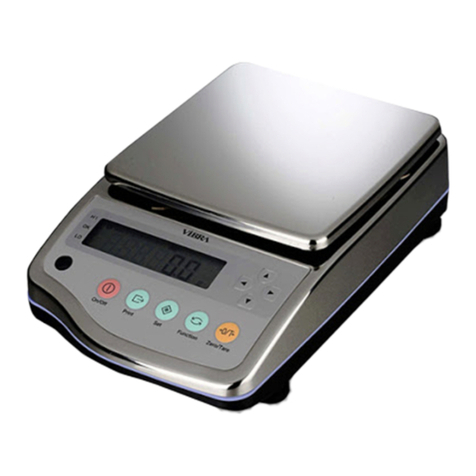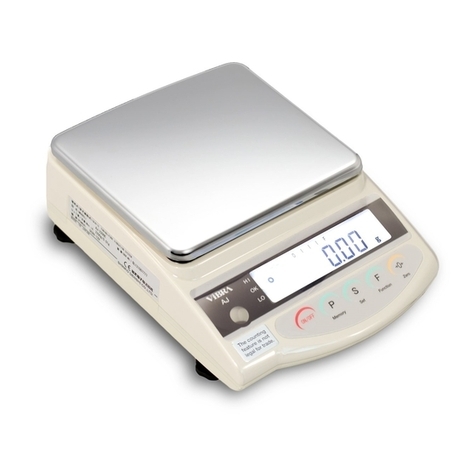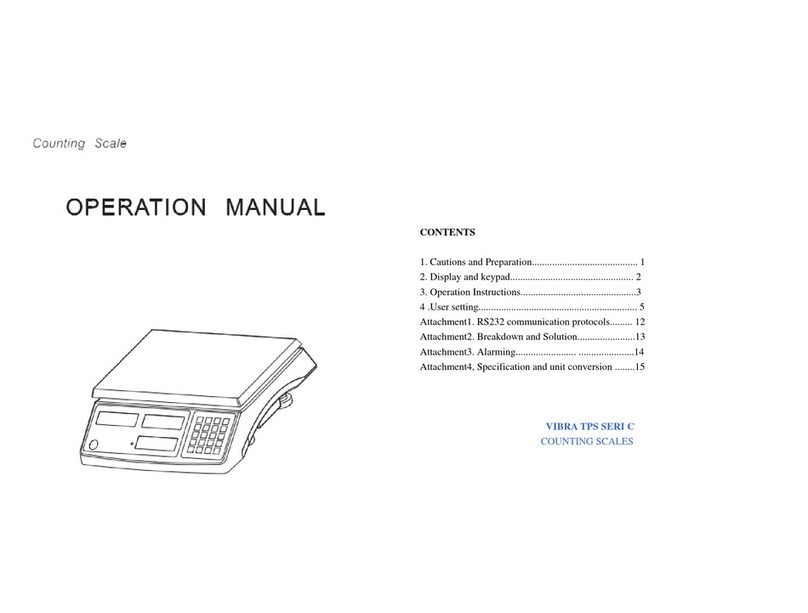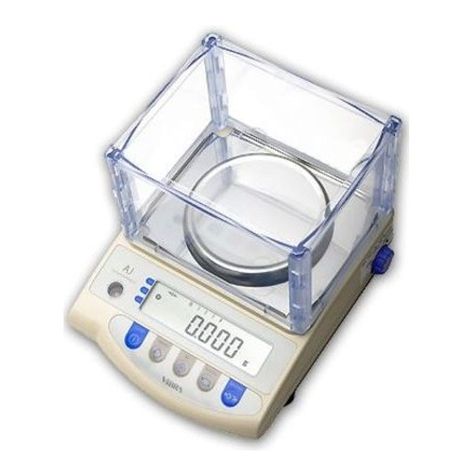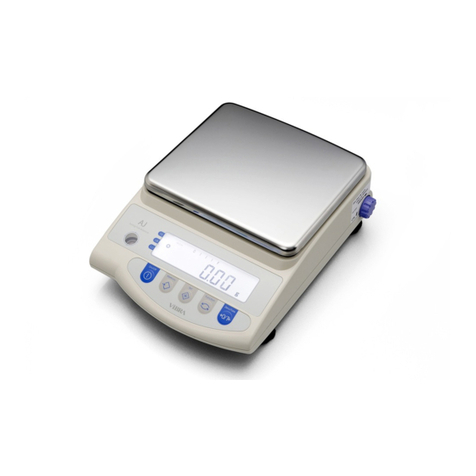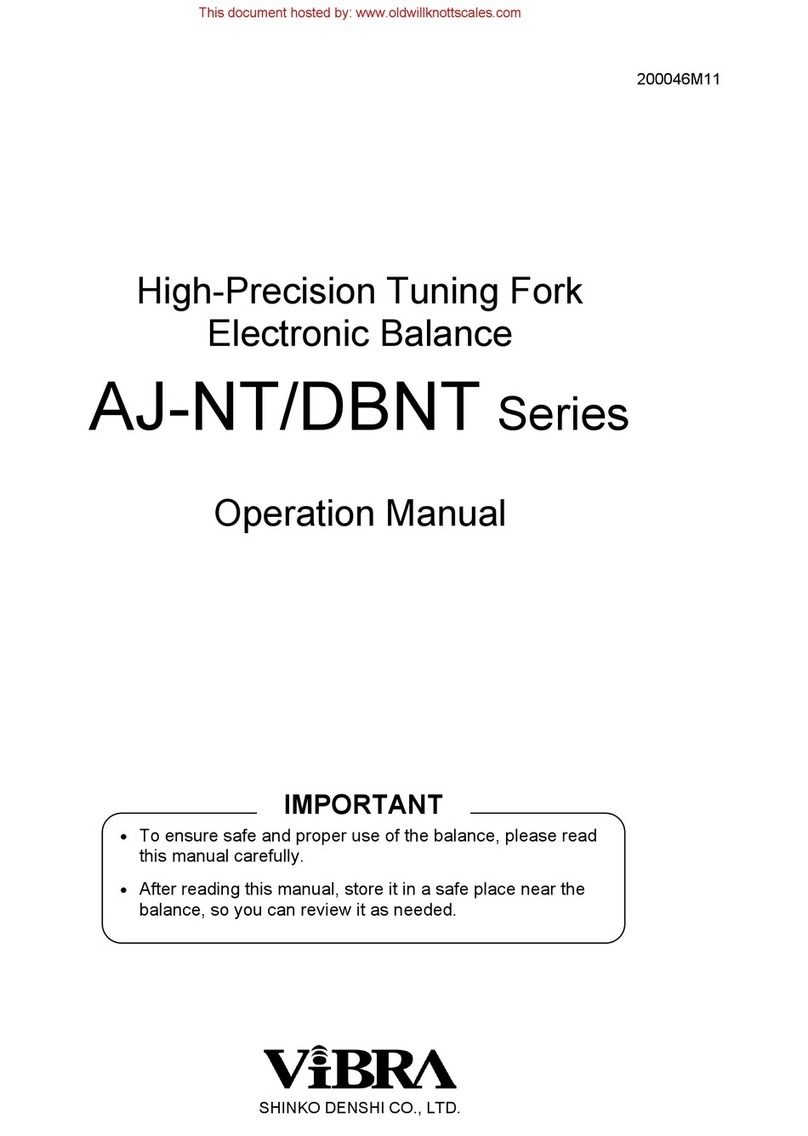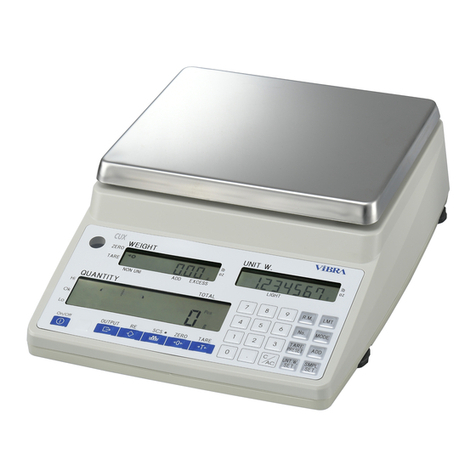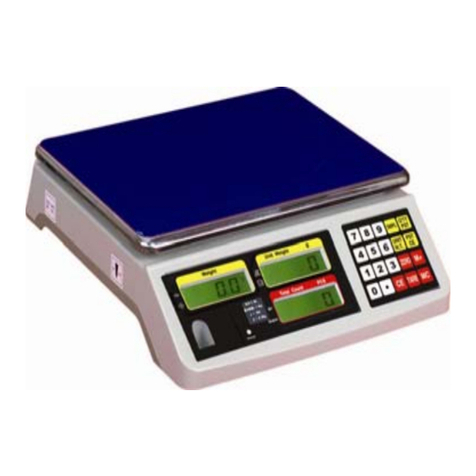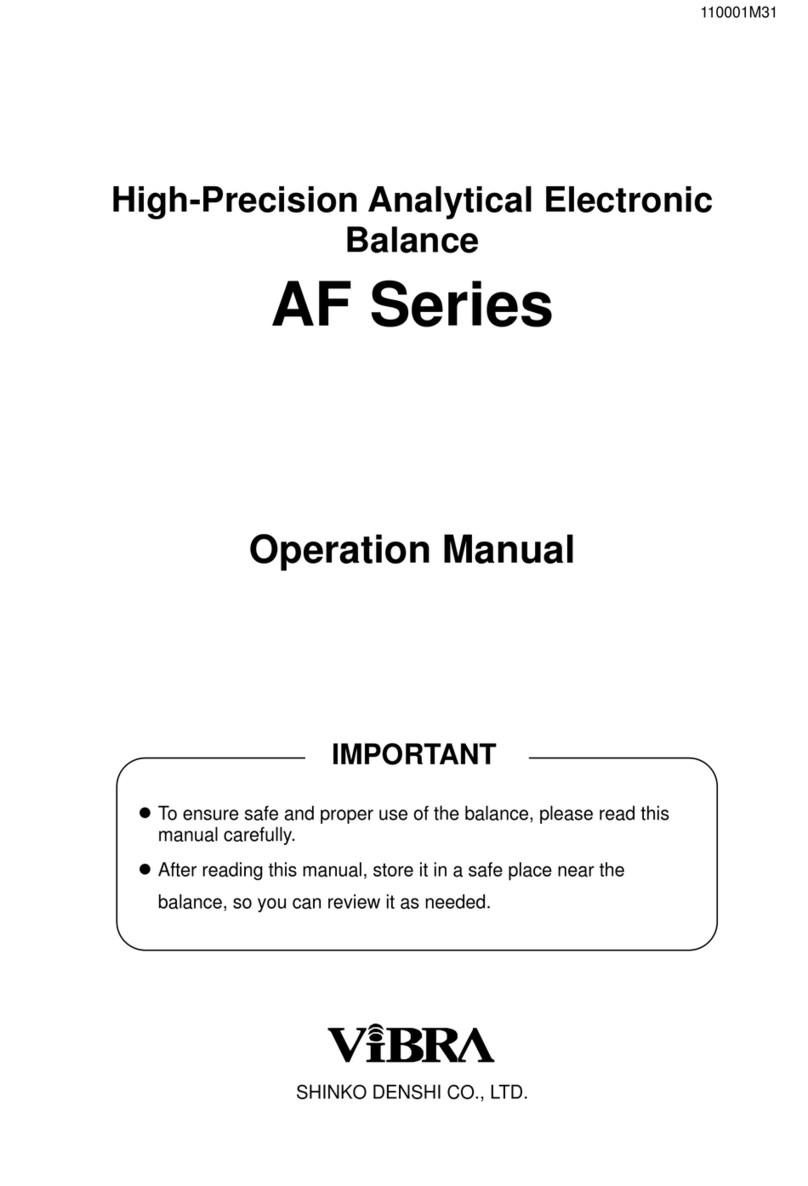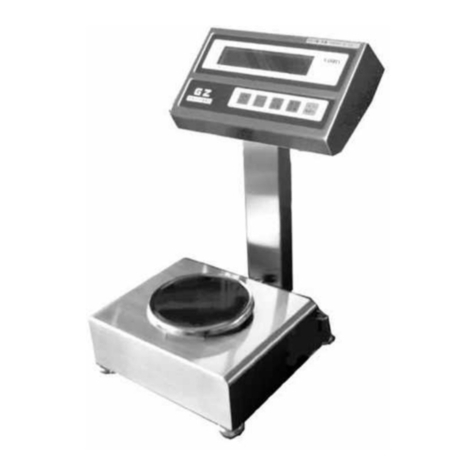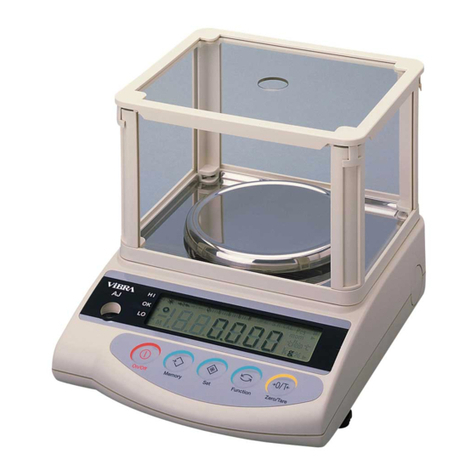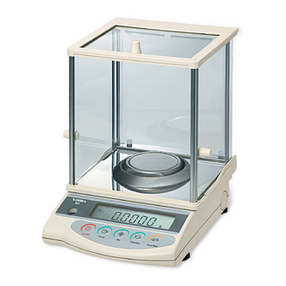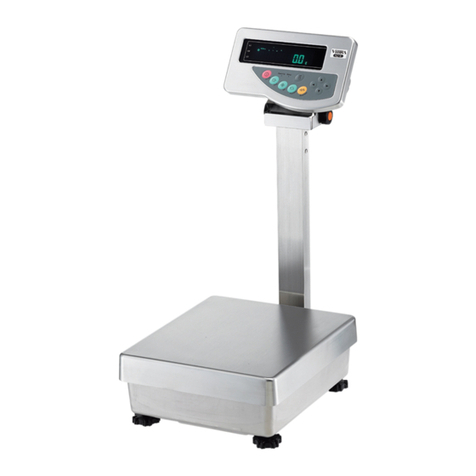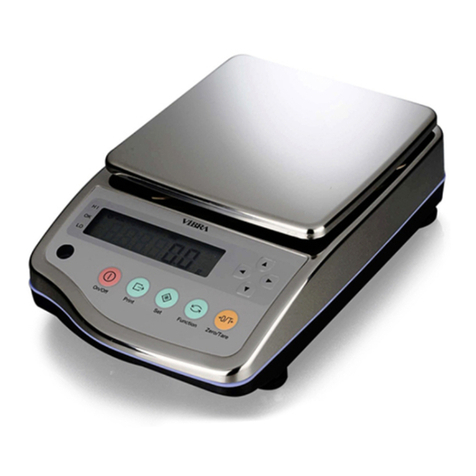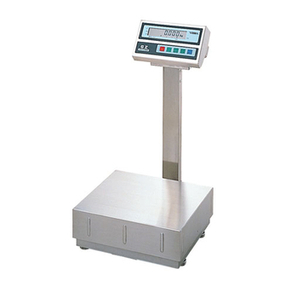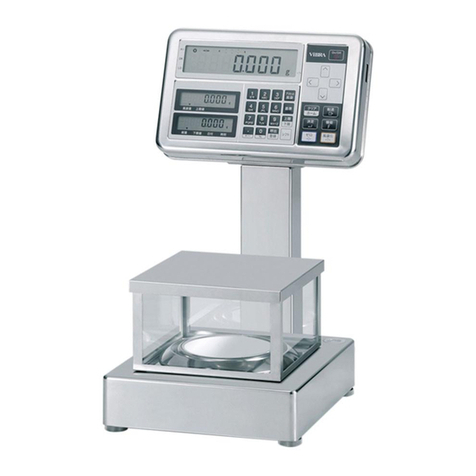
vi
3-7-1Weighing by means of addition .................................................................................... 36
3-8Stabilization wait setting .................................................................................................. 37
3-9Bar graph indication ........................................................................................................ 37
3-10Backlight setting ............................................................................................................ 37
3-11Auto power-off ............................................................................................................... 38
3-12Buzzer setting ............................................................................................................... 38
3-13“Simple SCS(Self Counting System) method” setting ................................................... 39
3-14Range mode setting ...................................................................................................... 39
4 Functions related to the performance ................................................................................ 40
4-1Hierarchy of functions related to the performance ........................................................... 40
4-2Stability discrimination width ........................................................................................... 40
4-3Response speed ............................................................................................................. 41
4-4Zero tracking ................................................................................................................... 41
5 Preset tare and Comparator setting .................................................................................... 42
5-1Hierarchy of Preset tare and Comparator setting ............................................................ 42
5-2Preset tare....................................................................................................................... 43
5-2-1Preset tare setting ........................................................................................................ 43
5-2-2Inputting of a preset tare weight value ......................................................................... 43
5-2-2 (1) Actual value setting method ...................................................................................... 44
5-2-2 (2) Numeric value setting method ................................................................................... 44
5-2-2 (3) Exiting the preset tare mode ..................................................................................... 44
5-3Setting of the discrimination value of the comparator function ........................................ 45
5-3-1Actual value setting method ......................................................................................... 46
5-3-2Numeric value setting method ...................................................................................... 46
6 External input/output functions .......................................................................................... 47
6-1Hierarchy of the external input / output functions ............................................................ 47
6-2Connector terminal numbers, their functions and specifications ..................................... 48
6-2-1D-SUB9P Connector for RS232C I/O........................................................................... 48
6-2-2D-SUB9P Connector for serial output for peripherals................................................... 49
6-3Communication format .................................................................................................... 49
6-3-1Basic data output format / CSP format ......................................................................... 49
6-3-2CBM data output format ............................................................................................... 51
6-4Input command ............................................................................................................... 52
6-4-1Transmission procedure ............................................................................................... 52
6-4-2Input command composition 1 ..................................................................................... 53
6-4-2 (1) Zero-point adjustment/Tare/Output control setting command .................................... 53
6-4-2 (2) Date output request and time output request ............................................................ 53
6-4-2 (3) Span adjustment/test command ................................................................................ 54
6-4-3Input command composition 2 ..................................................................................... 54
6-4-3 (1) Comparator setting command ................................................................................... 54
6-4-3 (2) Preset tare value setting command ........................................................................... 54
6-4-3 (3) Interval (output) time setting command ..................................................................... 54
6-5Response ........................................................................................................................ 55
6-5-1Response command format (A00/Exx format) ............................................................. 55
6-5-1(1) Response command .................................................................................................. 55
6-5-2Response command format (ACK/NAK format) ........................................................... 55
6-5-2(1) Response command .................................................................................................. 55
6-6Communication setting .................................................................................................... 55
7 Functions related to the lock ............................................................................................... 57
7-1Hierarchy of functions related to the lock ........................................................................ 57
7-2Total lock release ............................................................................................................ 57
7-3Key lock function ............................................................................................................. 58
7-4Menu lock function .......................................................................................................... 58
8 Controlling and adjustment functions ................................................................................ 59
8-1Hierarchy of controlling and adjustment functions ........................................................... 59
